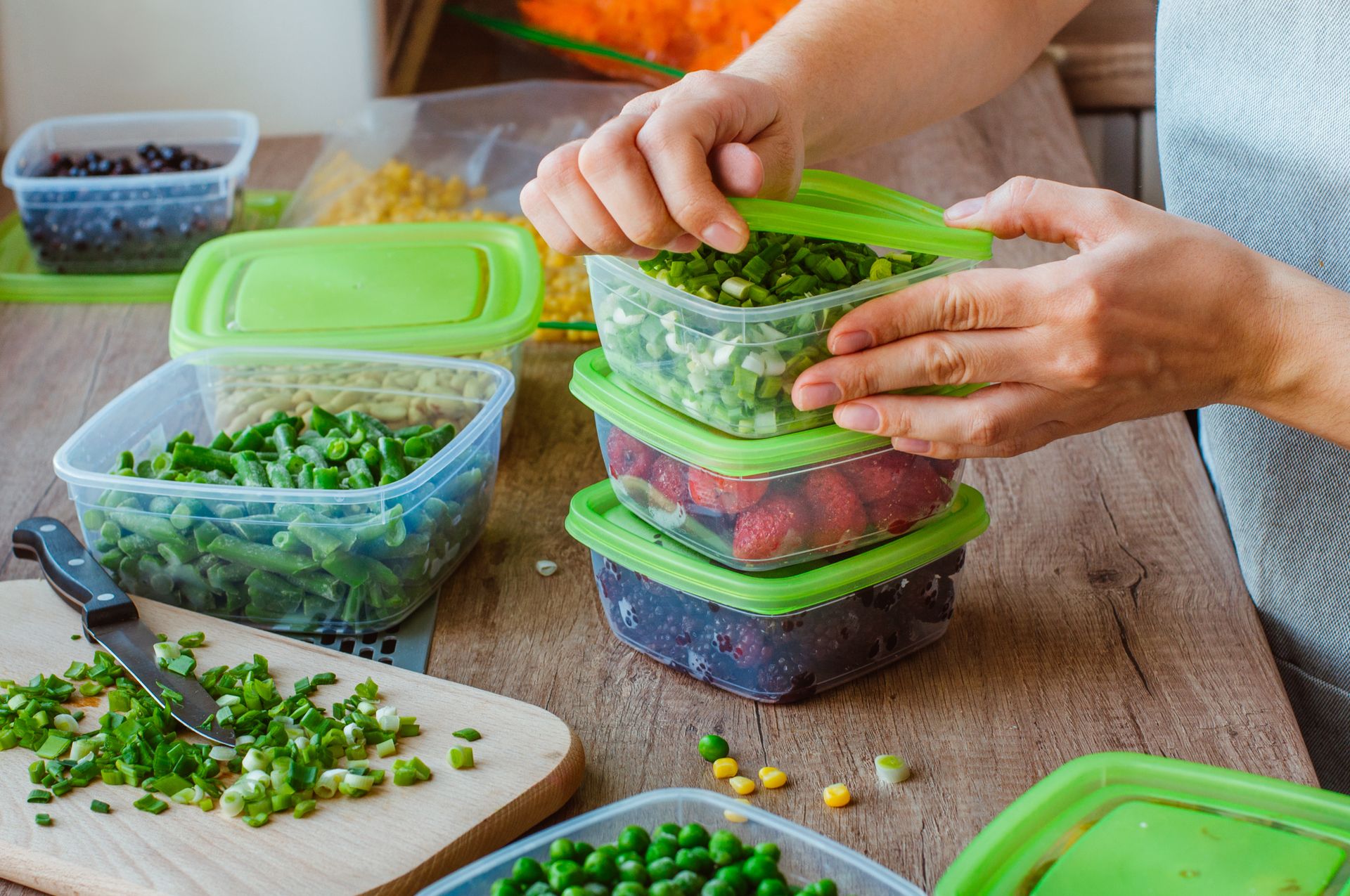Close up of woman preparing plastic food boxes with fresh green onion, strawberry and blackberry for freezing on the wooden table.Continue reading Close up of woman preparing plastic food boxes
When you think of meal planning, what immediately comes to mind? Is it thoughts of spending long hours strategizing, grocery shopping, and cooking? Or is it thoughts of ease—knowing that on a nightly basis, you’re not asking the proverbial question, “what’s for dinner?”
Whether you’re just starting out with meal planning or have been at it for a while, know that meal planning is a great way to improve your well-being. Why? Because it can save time, reduce stress, and help you create balanced meals. Sound interesting? Keep reading to learn six steps to level up your meal planning.
Step One: Gather Your Favorite Recipes
The best meal plans are easy, stress-free, and most of all, tasty! Meal planning has the potential to improve your overall diet. As a matter of fact, one study showed that meal planning is associated with consuming a healthier diet and less obesity. This is ideal but less likely if you don’t realize that the key to meal planning is eating foods you actually like.
I recommend gathering three of your favorite recipes each week. You do not have to plan every meal, especially if you’re a busy person on the go. Instead, planning just a couple of recipes each week can take the burden out of meal planning. Quick and easy crowd-pleasers to add to your recipe index may include:
Breakfast: Easy, Protein-Packed Overnight Veggie Breakfast Casserole with a Fruit Salad
Lunch: Low-Carb Cajun Skillet with Spinach Mason Jar Salad with Apple Cider Vinaigrette
Dinner: Chicken Cashew Stir Fry
Step Two: Make a Grocery List
There’s an art and science to an awesome shopping trip, and it all starts with an organized grocery list. The art of grocery shopping revolves around ideas for meals and trying new foods. In contrast, the science of grocery shopping revolves around label reading, product comparison, and getting the best bang for your buck.
While you don’t have to be a dietitian to understand the art or science of a shopping list, I find it best to prioritize my foods into their different food groups: fruits, vegetables, whole grains, lean proteins, and low-fat or fat-free dairy foods.
Also, here’s a pro tip: when buying produce, keep an eye open for what’s in season. Eating seasonally can help you save on your grocery bill. Check out this guide if you’re wondering what’s in season now. Once you have your list together, you’re ready to move on to the next step.
Step Three: Check Off the Items You Have On Hand
Have you ever bought a grocery item to come back home and find that you already have the exact same product on the shelf? No worries, we’ve all done that. Taking an inventory of what you already have in stock and checking those items off your grocery list saves you time and money. Organize your pantry, freezer, and refrigerator to make life easier. This way, you’ll be able to find that extra bag of rice or jar of tomato sauce you need for this week’s meal.
Step Four: Go Grocery Shopping
It’s important to go grocery shopping on a full stomach. Shopping when you’re hungry may lead to impulse buys, overspending, and buying high-calorie foods you may not have planned for. If you’re trying to avoid the crowds and long lines at the grocery store, try grocery shopping on your day off or during traditional work hours. Nowadays, you can even take advantage of online shopping. You don’t have to deal with crowds, and it may be convenient for your day-to-day schedule.
Step Five: Batch Cook
You now have all your groceries on hand, so it’s time to get cooking. Turn on your favorite podcast or playlist, put on your apron, and get ready to get your hands dirty in the kitchen. Try batch cooking or cooking large portions of food with the intention of having some leftovers. The key to batch cooking is to cook one or two things at a time—so you don’t ruin a dish by accidentally adding extra salt or overcooking it.
Step Six: Clean As You Go
Instead of waiting until your kitchen gets dirty, it’s important to clean as you go. This will cut down on the chaos. For example, let’s say you want to prep baked chicken and twice-baked potatoes for the week. You may consider getting your chicken into the oven first, cleaning and sanitizing your workstation, and then moving on to the potatoes while your chicken is baking. This step will save you from that huge pile of dishes that no one ever wants to clean at the end.
The Bottom Line:
Meal planning can be the key to getting more nutrients and eating a healthier diet. The steps above make a solid game plan for creating nutrient-packed meals for breakfast, lunch, and dinner. Remember, if you’re ready to start meal planning, you first need to have an idea of what you want to make. No worries, we’ve got you covered. Check out our recipe index here to get started. You got this!

